Estimated reading time: 8 minutes
It's no secret that roosters can make quite a bit of noise when they're sounding the daily wake-up call. In fact, they often raise the alarm all day long, even if it's only to let the hens know they've found a bug. But did you know that hens can be as noisy, if not noisier?
Many hens will start cackling when they're getting ready to lay an egg. This usually prompts the entire flock to encourage her with their “egg song”. It may continue until the task is complete and can become deafening.
Living in an area with irritable neighbors or noise regulations, you need chickens that are on the quieter side. While no chickens are ever going to be completely quiet, there are some breeds known to be a little less noisy. Today we'll look at some quieter chicken breeds for urban homesteaders to choose from.
Want to save this post for later? Click Here to Pin It On Pinterest!
Here are the contenders (in alphabetical order):
Australorp
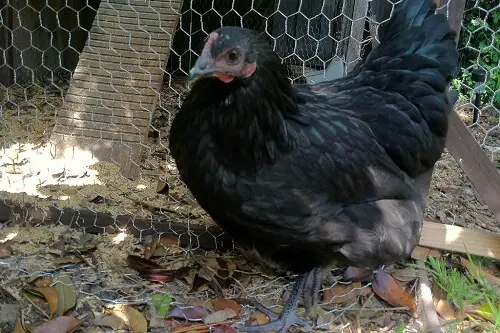
Australorps are calm birds with sweet dispositions that just happen to lay about 250 eggs a year. They are also great brood mothers, sometimes raising several clutches in a year's time. A glossy black is the most common color for this magnificent breed.
Barred Plymouth Rock
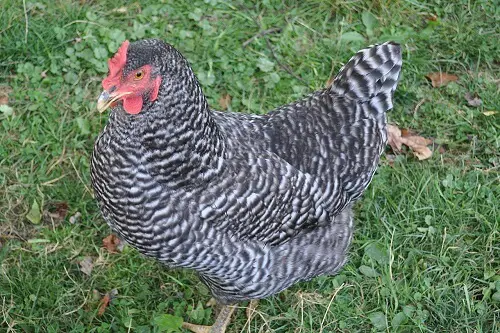
Also known as Barred Rocks, this is one of the easiest breeds of chicken to find and raise. Every feed store and hatchery in the country will offer them for sale – for good reason. They are a very friendly and attractive bird that lays a lot of nice, big eggs.
There are actually several other varieties of Rocks, but the Barred Rock is by far the most popular. This is due, in part, to the fact they're sexable at hatch – the roosters will have a white dot on the top of their head. Every homestead and barnyard needs a Rock in the flock.
Brahma
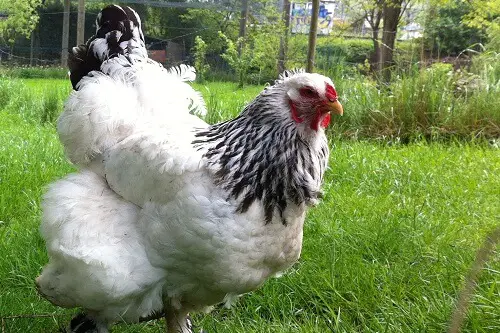
A standard Brahma can weigh up to 12 pounds for a rooster and almost 10 pounds for a hen. They are attractive and stately birds that calmly go about their business in the yard. Light, dark, buff, and partridge are the most common varieties for this large heritage fowl.
Buff Orpington Bantams

Miniature versions of the popular Buff Orpington, these bantams share the same friendly and docile traits in a smaller package. Their golden feathers and quiet nature make them suitable for smaller spaces seeking the calm of larger Orpingtons without the volume. They lay consistently while keeping the noise to a minimum.
Cochin
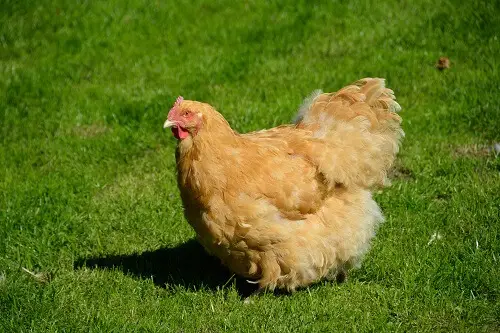
Often called the “fluffy, round chickens with feathers on their legs”, Cochins are the eye candy of the yard. They are valued for their motherly instincts and desire to hatch (their own as well as other hen's) eggs. Standard Cochins come in several colors. The blue/black/splash variety is one of the most popular and attractive, although the light brown variety is also beautiful.
Delaware
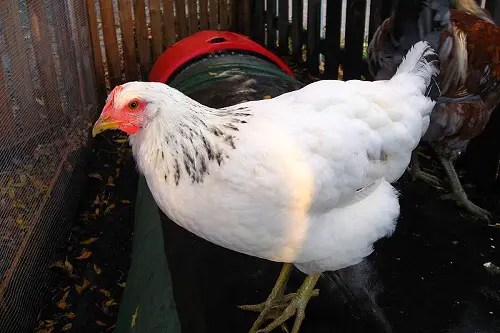
Delawares are an original American breed valued for their multi-purpose use. They are prized for their meat as well as their many eggs. Their inquisitive and downright nosy personalities make them a joy to have around. They are a striking white bird with black markings on their neck, tail, and wings. Their popularity has been renewed as homesteaders are discovering this lovely all-around breed.
Faverolle
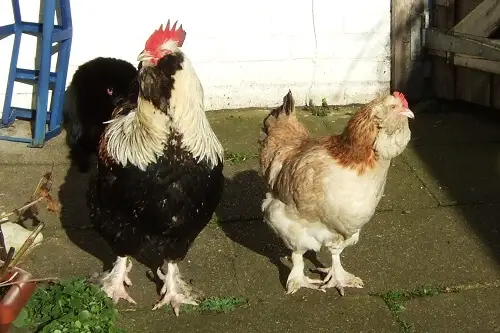
Faverolles have gained worldwide popularity due to their unusual and attractive appearance. These friendly birds have fluffy beards and muffs as well as feathered legs (like the Cochins). The most popular variety of the gentle Faverolles is the salmon color which is unique to the breed. Another uncommon feature is the five toes on Faverolles versus the 4 on most other chickens.
Orpington

Orpingtons are another breed that makes people want to pick them up. Their large size coupled with soft feathers makes for an extremely pretty bird. It helps that their sweet personalities match their appearance. They are one of the most popular family-friendly chicken breeds. While they come in many colors, the Buff Orpington is by far the top pick.
Silkies
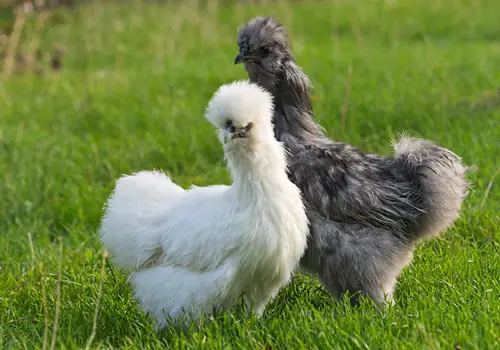
Renowned for their soft, fluffy plumage and teddy bear appearance, Silkies are as quiet as they are cuddly. These small, friendly chickens are perfect for family-friendly flocks, offering a gentle clucking that rarely disrupts the peace. Their exceptional brooding behavior makes them ideal for egg-hatching, contributing to a serene backyard setting.
Speckled Sussex Bantams
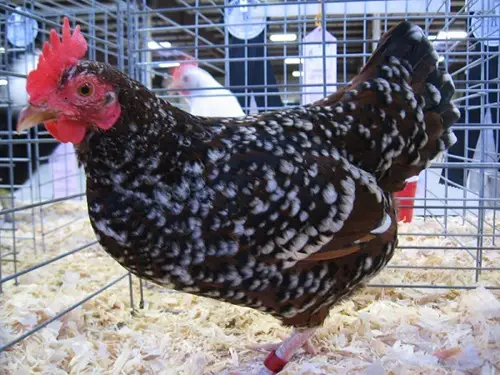
These smaller versions of the Speckled Sussex are admired for their beautiful feathers and quiet demeanor. They blend curiosity with calm, making them less noisy and ideal for peaceful backyards. Adaptable and sociable, they are a charming and less vocal choice for any urban homestead.
Sussex

The Sussex is an English breed that has gained popularity worldwide. This dual-purpose breed has many varieties: brown, buff, lavender, light, red, silver, speckled, and white. The rarest and most sought after coloration is the Coronation Sussex. This white and lavender variety honors King George's coronation in the 1950s.
Wyandotte
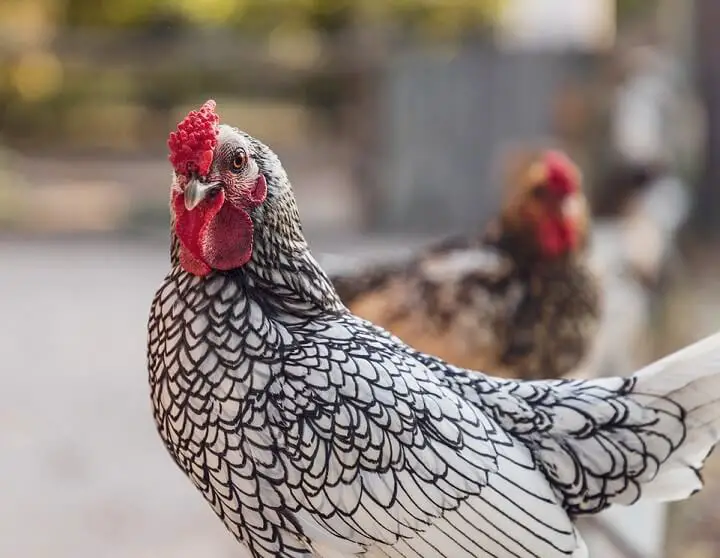
The beautiful Wyandotte is an American breed popular in the barnyard as well as the show ring. These dual-purpose birds are known for their striking plumage and their docile personalities. Many 4H kids get their start in raising and showing poultry with the gentle Wyandottes.
The breeds above are all large fowl or standard size poultry that lay medium to large, creamy tan to brown eggs. If you prefer bantam or miniature chickens, try Mille Fleur D'uccles or Bantam Cochins. Both are calm, colorful, and docile breeds that are family-friendly. They're prolific layers, but keep in mind you'll need three of their eggs to equal one medium-large egg.
These observations and recommendations are based on the selected breeds as a whole. It is not uncommon to get an individual bird that acts differently than the rest of the group. If it isn't aggressive or too noisy, enjoy your quirky chicken with the oddball personality. Variety is, after all, the spice of life.
Like this post? Don't Forget to Pin It On Pinterest!
About the Author
Julie Dees is a freelance writer from Central California who also happens to be a real, lifelong cowgirl. She enjoys writing about animals, gardening, homesteading, and most anything related to the outdoor life. Contact her at http://www.thecowgirlwrites.com.
You May Also Like:







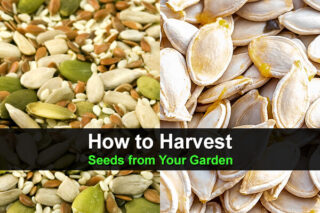





Julie,
Just a note on your text about Barred Rocks being ‘easily sexed.’ I’ve been raising Barred Rocks for years now, raising new hatchlings each year. They ALL have a white spot on the tops of their heads. Some sites claim that the shape of the spot indicates the sex — that a larger or irregular spot indicates a male. I have found that the females will have a somewhat smaller white spot than the males, but ‘small’ or ‘large’ or ‘irregular’ are too subjective of terms to be reliable.
I will say that by two or three weeks old, the males are more easily identified. When they start to feather in, the males’ coat of feathers will appear to be noticeably lighter. They have wider white ‘bars’ than the females.
Thanks for the listing. Thinking of getting another breed to add to the flock — one more prone to going broody. Barred Rocks don’t seem to ever go broody.
— MIc
— mic-roland.com
I have 4 of the breeds listed and they are extremely noisy ! They won’t stop until they get attention or treats.
I had to laugh that these were all listed as quiet!! I have half of them and they are all noisy!! I don’t really think there is such a thing as a quiet chicken!@1
Well, it doesn’t say quiet. It says quieter.
We have a problem with ours being noisy at 5am!! Really loud hens, so yesterday we locked them in at night and I woke at 7 and let them out it seems to have done the trick 👍
Hi
I love this chickens, and don’t know if they love feeding mealworms.
We’re a bigger dried mealworms online retailer worldwide, now we launched some products on amazon, our brand is called ” Eggcellent”, you may find it, keywords – mealworms dried -.
If you’re interested in this, we may provide some trials for your feeding, this is free of charge, please let me know.
I’d like to give it a try. I’m a top amazon reviewer
I’d like to try as well, but can’t seem to find them on amazon. I do a ton of reviews as well
It’s a *very* minor point, but under “#8 Sussex” it says “This white and lavender variety honors King George’s coronation in the 1950s.”
The only King George who reigned during the 1950s was had his coronation in 1936. His daughter, Elizabeth, followed him in 1953.
We kept Orpingtons and Araucanas. Both did exceptionally well together and both were mild mannered and family friendly birds. When we lived in the ‘burbs, I never received any complaints over their cackles.
Araucanas are the Easter Egg chicken. Shell colors run from blue to olive green and the eggs do dye up wonderfully. An American hybrid, the Amercauna, has many of same characteristics as its parent breed.
It should be noted that the Homestead Act of 1862 was only made available to White people.
(“The 1866 Act explicitly included black Americans and encouraged them to participate, but rampant discrimination, systemic barriers and bureaucratic inertia slowed black gains”.)
———————————————————————————————————————————
https://en.wikipedia.org/wiki/Homestead_Acts
The Homestead Acts were several laws in the United States by which an applicant could acquire ownership of government land or the public domain, typically called a homestead. In all, more than 160 million acres (650 thousand km2; 250 thousand sq mi) of public land, or nearly 10 percent of the total area of the United States, was given away free to 1.6 million homesteaders; most of the homesteads were west of the Mississippi River.
An extension of the homestead principle in law, the Homestead Acts were an expression of the Free Soil policy of Northerners who wanted individual farmers to own and operate their own farms, as opposed to Southern slave-owners who wanted to buy up large tracts of land and use slave labor, thereby shutting out free white farmers.
The first of the acts, the Homestead Act of 1862, opened up millions of acres. Any adult who had never taken up arms against the Federal government of the United States could apply. Women and immigrants who had applied for citizenship were eligible. The 1866 Act explicitly included black Americans and encouraged them to participate, but rampant discrimination, systemic barriers and bureaucratic inertia slowed black gains.[1] Historian Michael Lanza argues that while the 1866 law was not as beneficial as it might have been, it was part of the reason that by 1900 one quarter of all Southern black farmers owned their own farms.[2]
Hey Charles, your comments don’t tie into the chicken breeds in any way at all, stop using this platform to push a different narrative, we’ve all had enough of the woke commentary, if you need to post your narrative please look for another blog that suits it, I’m sure you’ll find thousands available to post your rhetoric on instead of here.
It probably doesn’t matter that much, but the photo that’s supposed to represent the Wyandotte, is a photo of either some Barred Rocks or Dominique’s.
Thanks for letting me know. I changed the picture.